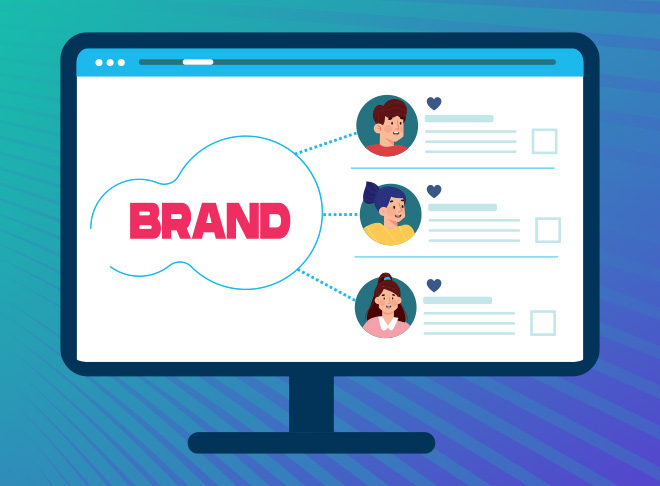We live in a world that is increasingly physically disconnected and digitally connected. In this environment, an effective community has become an invaluable brand asset, enabling brands to positively connect with and influence their audiences. Community is becoming more prevalent as a tool because, in response to a looming recession, brands are looking for ways to more firmly anchor existing customers to them but also to attract new customers from a wider range of markets. Developing a community that supports, helps and adds value for those audiences is an exceptional way to cut through the noise and drive lasting engagement.

Businesses that have managed to build a successful community around their brand(s) are finding that they continue to derive value from it far beyond their initial investment, through the improved engagement, referral, repeat custom, brand advocacy, visibility and share of voice they can generate.
Effective communities take on a life of their own, becoming self-sustaining and, with creative thinking, brands can support the organic expansion of their community, bringing in new audiences and driving even greater engagement as well as business opportunity. It is amazing to watch a community take on a life of its own: members engage with one another simply to experience human connection and a sense of belonging, while the brand benefits immensely from positive associations and word of mouth. Brands can even leverage negative feedback positively. By acting to address the issues and being seen to care and do something about the problem, it is possible for a brand to turn negative feedback into a positive experience, and have it witnessed by their community, building the brand organically from within.
For many seasoned marketers, the idea of building a true community around their brands feels risky, awkward, or just plain unfocused. What if you put in all the effort and investment and it fails to engage your audience, leaving the community space embarrassingly empty and quiet? Well, it’s a risk and not all brands and brand audiences are well suited to using the idea of community as a channel. That said, many are, and community is an opportunity for businesses to connect with, sell to and retain their B2B and B2C consumer more effectively.
What Does Community Mean in Digital Marketing?
Community means different things for different people, but we're using it in a specific context of a group of people who have a shared interest in something related to your brand. They might be interested, for example, in your product range, in the field your business relates to, for example sports or craft, they might be keen to learn more about what you do and how to use your products better, or in the case of professional communities, in sharing their ideas and expertise and using your skill to improve what they do. If you do it right, you have the opportunity to convert some of them to loyal advocates of your brand.
An effective community creates a space for customers, prospects, and target audiences, where they find enough value to make interacting with your brand socially rewarding. Each interaction has the potential to broaden the base of accessible potential buyers and brand advocates. This comes down to creating value that is not centred around your product or service, but rather unearthing what value looks like to the community you’re looking to create. As Lan Phan, founder of a leadership development programme Community of SEVEN, puts it using the example of a popular self-help coach: “I love Tony Robbins. But it’s about him and his wisdom. Community of SEVEN is not about me and my wisdom, it’s about the shared wisdom of everyone.”
While some businesses have such a viral product or service that a community grows around it naturally, for example Nike’s Run Club, HubSpot’s Community and Utopia, most have to work for it to make it happen. The good news is, once you’ve built the solid pillars of your community, it can take off and sometimes go beyond what you envisioned it to be.
The Rise of Community as a Digital Marketing Tool
Community is emerging as an important aspect of digital marketing because it allows marketers to connect directly with their customers and prospects while also providing valuable insights into how the audience is engaging with content. The result? Better engagement and higher conversion rates. It is also a reflection on how audiences expect brands to interact with them in a fuller, less transactional way that in the past, and may also be a consequence of the impact of Covid, when face to face interaction with businesses was so suddenly unavailable.
According to Groupshop’s leadership piece in Forbes, with a strong community, you’re more likely to:
- Increase your average order value
- Lower acquisition costs
- Improve your product through customer feedback loops.
Community and the Demise of Third-Party Data
Your community also acts as a safety net, protecting you from the effects of the demise of third-party data: you can learn a lot about your audience’s real attitudes and respond to their needs by creating a network of meaningful connections, rather than targeting them based on demographics or tracking their activity on the internet.
A community can benefit nearly any type of business, but those that benefit the most are businesses that target specific groups of people, encouraging tighter bonds in the community. If your audience is new parents, hiring managers at tech companies, growth marketers, or chihuahua owners, you can certainly build a space for them to interact with your brand. The more specific you can get, the better.
Just like your audiences differ, different types of communities may be suitable to meet their needs. From user group communities, learning and networking groups, to stakeholder advisory boards and everything in between - you choose which type of community to create, based on what value you can provide to your target audience(s) and what your brand can gain in return. As David Berkowitz, founder of a community for marketers Serial Marketers puts it, it’s like starting any company or brand - you start with a goal of what you want it to be about and what you think is missing out there. You can watch David speak about his community more here.
How Can a Community Help You Sell Online?
Selling digitally without the community component often means that you're giving up control of your brand and your customers, particularly if your products or services are also sold via multi-brand retailers for example, ASOS, Very, John Lewis, Amazon etc. After all, if you sell a product via a different retailer, it is not easy to influence what price point your customer will respond to, or how they might feel about the product when they get it in their hands. Not to mention ensuring your product placements don’t end up in contexts that can damage your brand. Running a community gives you the ultimate power to regain brand control and interact with your stakeholders on mutually satisfactory terms.
As mentioned, Nike is currently leading the way in how businesses use their communities to drive growth. By creating a platform where users can interact with one another and engage with the brand, they're able to offer plenty of product-service-content combinations that best fit the needs of their customers. Motivational music playlists, leader boards, guided workouts, nutrition advice and more on one platform allow Nike to contextually place their products away from comparison with other brands, thus being able to sell more and at higher margins while consumers feel they are getting better value from the brand and from their purchases as a result. In Nike’s case, community-building efforts ultimately increased website and app revenue by 65% YoY.
But community isn’t a huge investment piece that only brands with massive budgets and bigger audiences can consider. You can start building your community from day one even if your offering isn’t exactly unique or viral. That’s because people are attracted to connecting with people - we love being part of a tribe as long as we see a genuine effort to create a welcoming space where we can share our interests with others.
HubSpot is another example of a brand with a successful community. They created a space where users can get their questions answered as they learn the platform, while partners get rewarded for being active with visibility and more business. This type of community is a win-win for everyone involved, but before you can rely on user contribution, you need to consider what resources you will bring in order to get the conversations started and keep your community active as it grows.
What You Need to Start a Community
Starting to build a community for your brand does not need to be expensive or hugely time consuming. Think about the smaller brands you have seen and interacted with recently and how they made you feel valued or added value to your purchase. Launching an effective community takes a well-thought through plan and judicious deployment with a generous helping of creativity alongside a thorough understanding of the audiences you want to attract.
A Digital Platform
Unless you have a very custom use case and a large budget, it’s likely that a digital platform already exists that can satisfy your needs. Businesses have successfully built communities using free platforms like social media, Slack groups, or specialised community platforms like Mighty Networks. The latter gives you the advantage of having built-in tools for running events and natively delivering various types of content, from educational to entertainment. But what also matters is how easy it will be to bring people on board: how much effort it will take for them to join and how familiar they are with the platform you are planning to use.
A Community Manager
What matters as much as the platform you choose is having an energetic community manager drive the discussion, facilitate exchanging ideas and inspire newcomers to become active members. Without one, your community effort risks dropping out of the race early on, failing to spark enough member engagement to catch on. This doesn’t mean you necessarily need someone working full time on the project, but someone with the experience in what works goes a long way in creating a vibrant, blooming meeting space for the audiences you’re aiming to reach.
A Plan
Knowing what you want as a business from the community and also what it will offer your target audiences is key. Your community members need to know that joining the community will offer them tangible and measurable value, especially in the case of B2B communities. Undertaking the right research and planning will help you to understand what your audiences actually want from your community and help you to identify the value of your community for your members. This clarity will also help define messaging and the USPs of your community which can be used to market it and drive membership acquisition, as well as the structure of your community and the way it is managed and evolved.
In terms of your business goals, it is key to maintain alignment between the wants of your audiences and the needs of the business. By servicing the former, the expectation is that the latter will be met with greater engagement, greater visibility and ultimately greater (hopefully repeated) revenue.
Could Your Brand Benefit from an Online Community?
Our prediction is that community will continue as a trend through the coming year, as a means to combat reduced spend and price sensitivity that are likely to increase with the forecast financial downturn. The key is adding value that your audiences cannot find elsewhere making your products and services the best choice to fulfil their needs. Understanding whether a community could help your brand takes research and investigation, but could ultimately be the factor that puts your business head and shoulders above the competition in the coming years.
The Innovation Visual Team can help you understand the potential of community for your business and also help you plan and implement the right community structure to deliver on your objectives over the short, medium and longer term.
Why not get in touch to start a conversation? We can provide just the expertise you need to jumpstart and drive your community efforts. Get in touch with our team today and start the conversation.







